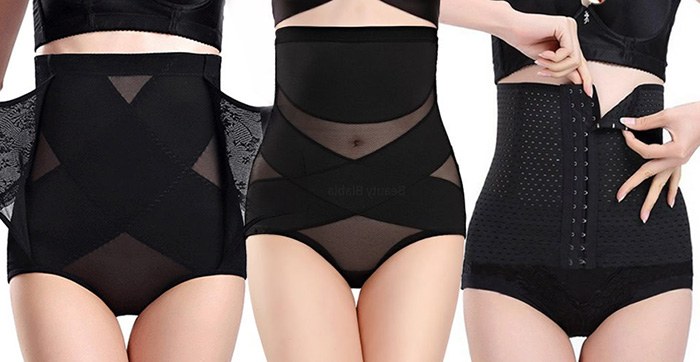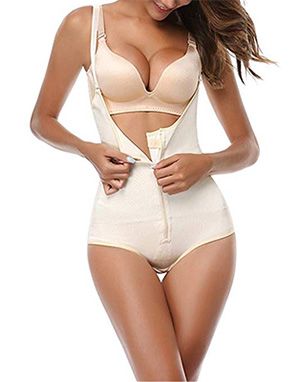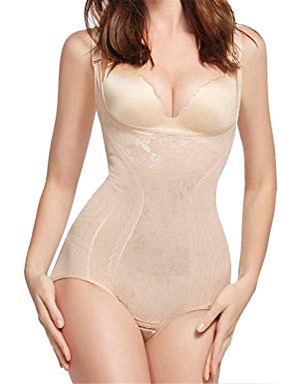
Spanx paved the way for many other shapewear brands. Shapewear is overtaking the online shopping domain and is transitioning itself into an essential for millennials. Despite this fact, is Spanx quickly losing popularity with millennials and generation X?
Wearing shapewear for the first time can feel slightly like an emotional roller coaster ride. Just squeezing into them can be fulfilling and liberating. Nothing is as blissful and sinful as seeing how that tight cocktail dress now fits perfectly. You feel fabulous!
But as the night goes on, that annoying clinching of your internal organs becomes more and noticeably uncomfortable. You feel as if you are slowly dying inside and most likely at this point are asking yourself “why did I do this to myself?” Your body is crying out for freedom, which ends with you pulling them off in the car on the way home.
At the end of the evening, you decide that you love your lumps and bumps but you still loved how empowered you felt in your shapewear. So chances are that you will be probably going to take them out for another spin.
Even though women are replacing their underwire bras for a more comfortable sports style bra, they are not ready to ditch their beloved shapewear yet. It has been almost twenty years since Oprah foretold that Spanx would be every woman’s favorite ‘thing’.
Up until recently, celebrities were publically shamed if they were caught wearing shapewear on the red carpet, but now they show it off to make themselves more relatable to the average woman. Even Kim Kardashian created her inclusive line of shapewear.
In the United States alone, the shapewear industry brings in more than $500 million dollars a year and keeps growing each year. The shapewear market is dominating the online shopping domain and experts predict that this online industry will skyrocket in the next two years to a 5.5 billion dollar market.
But on the other hand, the lingerie department is drastically declining each year. Many lingerie brands such as Victoria’s Secret are facing a risk of bankruptcy if they cannot make their brand more appealing to the millennials.
Shapewear has evolved into shaping lingerie and some of the styles would make your grandmother’s corset blush. Over the last few years, the use of innovative fabrics that are easier to put on and more comfortable to wear with extra compressing power make shapewear more appealing.
Shapewear brands such as SKIMS and Heist Studios have created collections that promote inclusivity and body positivity. They are now offering a wide range of different skin tone colors and sizes thus liberating all women. Finally, by using real women from all ethnic backgrounds and body types to model their shapewear, all women are represented.
The Spanx Cliché
 However, Spanx has been losing sales and if they don’t step up their marketing campaign approach they will go the way of the Dodo bird. Millennials consider Spanx to be old school and they are tired of hearing the non-motivating story of how Sara Blakely became a billionaire.
However, Spanx has been losing sales and if they don’t step up their marketing campaign approach they will go the way of the Dodo bird. Millennials consider Spanx to be old school and they are tired of hearing the non-motivating story of how Sara Blakely became a billionaire.
They are looking for brands or stores that they can make a real connection to and feel positive about supporting. Even though Spanx stated that their mission has always been to empower women of all sizes and ethnic groups; many women say they started too late.
In a recent article in the New York Times, they mentioned a popular online shapewear marketplace called “Shapermint”. It quickly gaining popularity with all ages of women because it liberated women by empowering them to feel beautiful with or without shapewear.
In the New York Times article they interviewed the brand manager of Shapermint, Stephanie Biscomb. She explained that the philosophy behind Shapermint isn’t to hide a woman’s body but it is about wearing something to help you forget how your clothes fit. They offer styles for everyone, including the younger millennial generation that wants smoothing power with having the bejesus squeezed out of them.
Ms. Biscomb said that Shapermint recognizes that life is full of changes and so are our bodies. Once we learn to accept our body after having a baby or menopause, then something changes and we have to learn to love it all over again. Shapewear can help with this transition period.
In the same New York Times article, Bestie Larkin, the founder behind Honeylove shapewear, explained the she wanted to create a shapewear collection that was practical but beautiful too. She believes that it should make you feel confident from the inside out and not to be uncomfortable.
Honeylove market their product primarily through social media such as Facebook and Instagram. They show real-life videos of how their product works using ethnically diverse models with a wide variety of body types.
Women are shying away from companies that have a separate plus-size division on the webpage. Instead, companies like Shapermint and Honeylove proudly show their inclusivity by offering their entire collection together. Women don’t like being made to feel ashamed of their sizes by having to go to another private section.
Who Actually Wears Shapewear?
 Basically, everyone. For example a single mother living in Atlanta started wearing shapewear after seeing a series of ads on social media. She always considered herself to be a strong feminist but if shapewear makes her feel more powerful and secure, why shouldn’t she wear it?
Basically, everyone. For example a single mother living in Atlanta started wearing shapewear after seeing a series of ads on social media. She always considered herself to be a strong feminist but if shapewear makes her feel more powerful and secure, why shouldn’t she wear it?
A 24-year Canadian said she loves her shapewear because it felt like an extra layer of makeup, but for her body. But she decided to stop wearing it because she felt the shapewear companies were making money off of her insecurities. She admits that she still will still wear but looks for companies that are actually trying to empower all women.
Another young woman admitted that she often doubles up on her shapewear for a more smooth, sleek look. She considers shapewear to be body positive, because if she is in an interview and is worried about that muffin top or her back fat showing through, then obviously, that is a not a body positive moment.
In the past, shapewear has been likened to wearing stilettos, enhancing your assets and accentuating your curves where you need it most. Others have compared it to wearing an old-fashioned suit of armor that protects you from your insecurities. But, on the other hand, do we need protection from our own body?
So overall, shapewear can be considered to be body positive or anti-feminist depending on the eye of the beholder.
Source: New York Times
Leave a Reply